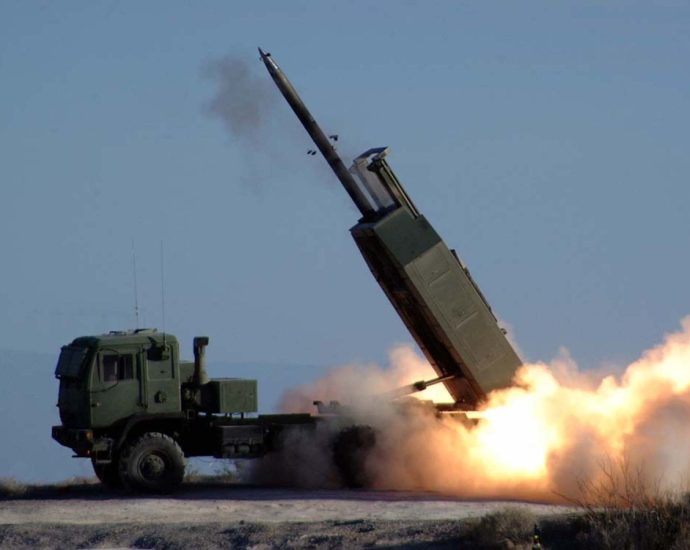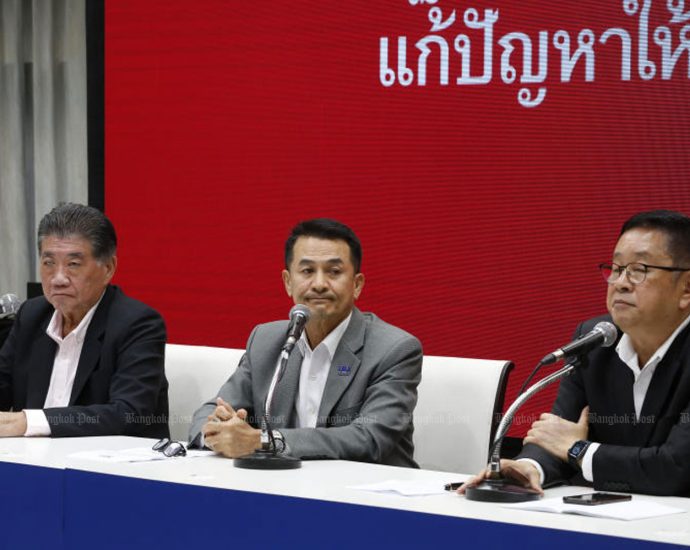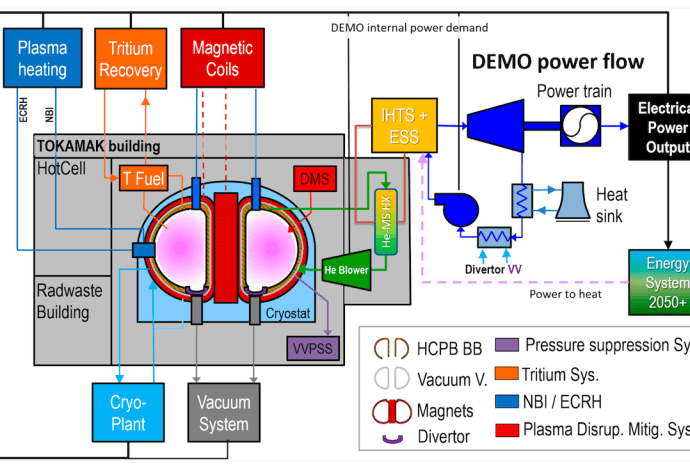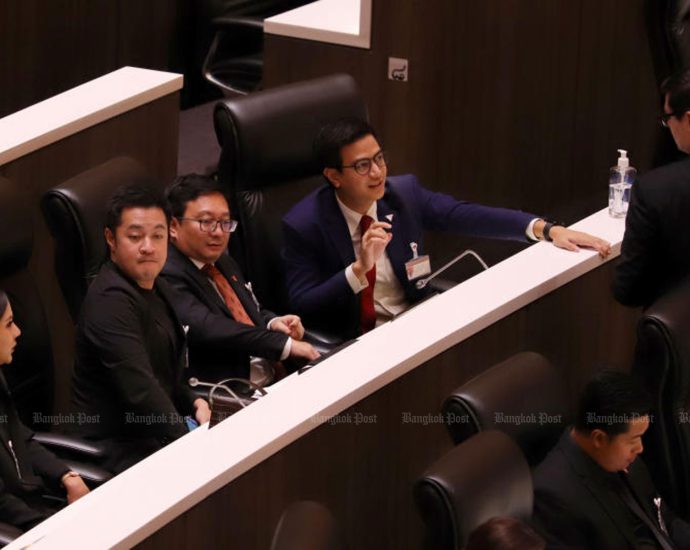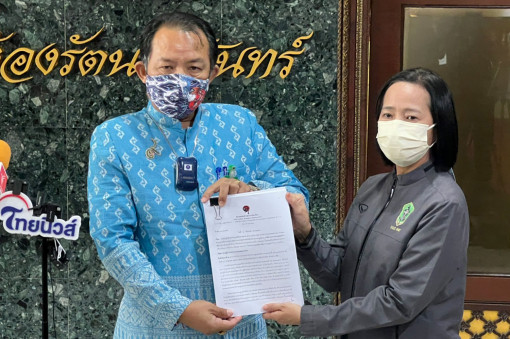Joseph Schooling fails to make final cut for Asian Games in Hangzhou

In response to queries from CNA, Singapore Aquatics said that selection for the Asian Games is based on swimmers clocking the fastest times during the qualification window.
Due to the postponement, the selection window deadline for swimmers was extended from April 2022 to May 2023.
“At the end of the extended window, two swimmers emerged ahead of Joseph on the back of faster times clocked during the selection window,” it added.
PREVIOUS ASIAN GAMES
Schooling had put up a record-setting showing at the previous two editions of the Asian Games.
At Incheon in 2014, he clinched Singapore’s first medal in a male swimming event at the Asian Games in 24 years, grabbing bronze in the 200m Butterfly event. He then took home gold and silver in the 100m and 50m butterfly events.
Schooling was responsible for two of the total of four gold medals earned by Team Singapore in Jakarta in 2018. The other two golds were from sailing and contract bridge.
He won both the 50m and 100m butterfly events, also setting an Asian Games record for the 100m. He subsequently helped the men’s 4x100m and 4x200m freestyle relay teams to bronze.
Australia test-fires short-range ballistic missiles

Australia continues to stock up on long-range precision firepower to deter China’s rapidly growing military footprint in the Pacific, with the first test-firing of the US Army Tactical Missile System (ATACMS) in its territory underscoring that effort.
This month, The Warzone reported that the US Army fired the ATACMS for the first time in Australia during the ongoing Exercise Talisman Saber 2023 in the latter’s territory.
The source notes that a High Mobility Artillery Rocket System (HIMARS) from the US Army’s 17th Field Artillery Brigade fired the ATACMS, with a US Air Force MC-130J Commando II aircraft moving the rocket launcher into position from eastern Australia to the Northern Territory.
The Warzone notes that the HIMARS is designed to be air-transportable and have good cross-country mobility, since moving military assets within Australia, much more than in the Pacific, requires significant logistical effort.
As for the ATACMS variant fired during the test, the source notes that the missile flew 260 kilometers to the Bradshaw Field Training Area target area, hitting the target with a high-explosive unitary warhead.
It says the ATACMS version used in the test was the MGM-161A, introduced in the early 2000s, which has a 226-kilogram warhead with a range of 300km. The Warzone notes that that missile can be used against static fortified targets with high terminal speed, enabling it to burrow into the ground and destroy underground structures.
HIMARS tested
Aside from the ATACMS, the US has also recently tested the HIMARS system in Australia. Early this month, Australia Defence Magazine reported that two HIMARS rocket launchers from the US Army’s 17th Field Artillery Brigade were deployed for Exercise Highball in Western Australia, aiming to develop how the Australian Defense Force (ADF) employs long-range land-based precision rocket systems for land and maritime strike roles.
Australia Defence Magazine also said that Exercise Highball responded to the Defense Strategic Review’s direction to accelerate and expand the introduction of long-range land-based maritime strike capabilities, particularly the HIMARS acquisition.
The source noted the urgent need to integrate long-range fires into the ADF’s operational capability and mentioned that using by US Army HIMARS strike package already in Australia for Exercise Talisman Saber 2023, the ADF would accelerate its understanding of employing and projecting the weapons system.
It also said Exercise Highball would enhance US interoperability with the ADF’s targeting capabilities and the operational employment of land-based, precision multi-domain fires.
In connection with that, Asia Times reported in January that Australia had finalized the purchase of 20 HIMARS rocket launchers to be delivered in 2026 while signing a separate agreement for Norwegian naval strike missiles (NSMs) to replace the aging US-made Harpoon anti-ship missiles on its Hobart-class destroyers and Anzac-class frigates in 2024.
Those purchases are intended to improve Australia’s long-range strike capabilities, with ATACMS and HIMARS enabling it to hit targets 300km away. Also, Australia has a joint program with the US to develop a precision-strike missile that can hit targets beyond 499km.
The deployment of HIMARS by Australia in Southeast Asia or the Pacific is being considered, following the US Marine Corps example. The USMC has been exercising with the system under the presumption that it would need to be deployed somewhere in those regions during a clash over Taiwan or the South China Sea.
Also, the stealthy sea-skimming NSMs would double the range of Australia’s warships to 185km.
Moreover, Asia Times reported in July 2022 that aside from the HIMARS and NSM, the US has approved the US$235 million sale of 80 units of the Joint Air-to-Surface Standoff Missile – Extended Range (JASSM-ER) to Australia. Those stealthy cruise missiles could be launched from the Royal Australian Air Force’s F-35 Lightning II or F/A-18F Super Hornet fighters, giving Australia much-sought-after long-range strike capabilities.
China’s perceived risk to Australia’s strategic security may have figured heavily in the latter’s decision to acquire long-range strike capabilities.
China’s rapidly improving long-range strike capabilities centered on bombers, submarines and missiles have put US military facilities in Australia within striking range, and its increasing footprint in Solomon Islands may be a prelude to a more significant military presence that can cut off Australia from the US and New Zealand.
Refueling challenge
The RAAF’s F-35 Lighting IIs do not have the range to reach the South China Sea and Taiwan without aerial refueling. Also, aerial tankers may not always be available over contested airspace.
Using Indonesian airspace to support Australian aerial refueling operations may be a hard sell, as the former does not allow its territory to be used as a military facility base for any other country. Hence Australia needs long-range strike capabilities that can operate from its own or friendly territories in the Pacific to impose unacceptable costs on potential adversaries.
However, Australia might blind-fire its long-range missiles without long-range intelligence, surveillance, and reconnaissance capabilities.
In a January article for The Strategist, Malcolm Davis notes that while Australia urgently needs long-range strike capabilities, it needs to see far to shoot far. However, Davis points out that China’s improving anti-access/area denial (A2/AD) capabilities can put Australia’s P-8A Poseidon maritime patrol aircraft and MQ-4B Triton drones at risk and reduce their time on station.
At the same time, he says Australia’s nuclear attack submarines (SSN-AUKUS) will not be ready until the 2030s. Davis notes that surface warships would be increasingly vulnerable to long-range missiles and surveillance systems.
Given those threats, Davis advocates space-based ISR (intelligence, surveillance and reconnaissance) capabilities for hemispheric surveillance and long-range strike, recommending Australia have its low Earth orbit (LEO) satellite constellation to provide high-resolution imagery and precision tracking.
He also says that such an LEO satellite constellation would follow a “small, cheap, and many” design philosophy, making it difficult to attack and easy and cheap to maintain, and would ensure strategic independence when it comes to that critical military capability while allowing for interoperability with allies and partners.
Thaksin Shinawatra postpones return from self-exile
PUBLISHED : 5 Aug 2023 at 10:23

Fugitive former prime minister Thaksin Shinawatra said on Saturday he was postponing his return from self-exile, as Thailand struggles to overcome a political deadlock after the May 14 general election won by opponents of military rule.
Thaksin, a former telecoms tycoon, spent years trying to resist military interference in governments led by his populist party and was eventually ousted in a 2006 coup.
Thaksin posted on X, the social media platform formerly known as Twitter, that he needed a medical check up and would delay his return, originally planned for Aug 10, by a couple of weeks.
“I want to postpone the return date to Thailand from (Aug 10) until not more than two weeks. I will inform the date and time again. A doctor calls me to undergo health check-ups.”
On Thursday, Pheu Thai Party deputy leader Phumtham Wechayachai insisted that Thaksin’s planned return to his home country remained unchanged, denying rumours of his delayed return.
On Thaksin’s 74th birthday on July 26, his daughter Paetongtarn “Ung Ing” Shinawatra, also a prime ministerial candidate of Pheu Thai, announced on Instagram that her father, who is widely believed to be Pheu Thai’s de facto leader, is set to arrive at Don Mueang airport on Aug 10.
Whistleblowers, including Chuvit Kamolvisit and Jatuporn Prompan, said they did not believe Thaksin will return to Thailand next week to face prison time.
The fugitive former prime minister has been living in self-imposed exile since being overthrown by a military coup on Sept 19, 2006.
This divorce could get messy

The split between the two largest parties, Pheu Thai and the Move Forward Party (MFP), may prove irreconcilable, with the MFP possibly on its way to getting a taste of its own medicine, according to a political expert.
While some pilloried Pheu Thai for dumping the MFP in favour of securing a coalition deal with parties in the previous government, others reckoned their political marriage was never meant to be from the outset.
The now-futile attempt to bring the two almost equal-sized parties into the same coalition was a mistake to begin with, according to the expert who insisted it was neither realistic nor wise to house these two tigers in the same cave and expect both not to fight, as the Thai saying goes.
Pheu Thai has torn up the memorandum of understanding, initiated by the MFP, that committed them and six other parties to agreements as well as terms and conditions associated with establishing a government together.
The expert said it had been predicted the MoU would be highly instrumental in a grand scheme that would ultimately work to the optimum advantage of the Pheu Thai Party while leaving the MFP, the MoU’s architect, out of the equation.
All the parties under the MoU were divided into two distinct blocs in terms of size.
On one side were the MFP, the biggest party with 151 MPs, and the second largest was Pheu Thai, with 141. On the other side were the small and micro parties; Prachachart, Thai Sang Thai, Seri Ruam Thai, Fair, Palang Sangkhom Mai and Pheu Thai Ruam Phalang.
There were no medium-size parties — those with between 25 MPs and 70 MPs — to speak of, which would have made the bloc more resilient to collapse. The alliance was susceptible to crumbling the moment one of the two major parties pulled out.
All the medium-sized parties — Bhumjaithai, Palang Pracharath, the United Thai Nation and the Democrats — were in the former government.

Jatuporn: MFP ‘alien to old school’
Described by Jatuporn Prompan, the former red-shirt leader and co-leader of Kana Lomruam Prachachon (Melting Pot Group), as being “alien” among the old-school political “species”, the MFP had very few friends among parties elected in the May 14 polls.
Pheu Thai, meanwhile, waited patiently for the opportunity to go for the kill, which came on July 13 when MFP leader, Pita Limjaroenrat, failed to muster enough support in a joint-sitting to clinch the premiership.
The MFP may have blundered in putting forth only one prime ministerial candidate. When the party’s bid to re-nominate Mr Pita six days later was rejected by parliament, the MFP’s fate was virtually sealed. It had no other candidates to further the cause of leading the next government and keeping the political momentum in its favour.
Pheu Thai stepped in to claim the right to lead government formation when it was clear the MFP’s bid to secure the post of prime minister was over.
Pheu Thai hinted at the possibility of adding more parties, presumably from the previous government, to the revised coalition line-up. Two such parties, Chartthaipattana and the Democrats, have admitted to being approached.
It was reported the two parties had insisted on a “non-negotiable” condition for joining, which was that the government being assembled must never pursue an amendment to the ultra-sensitive Section 112 of the Criminal Code or the lese majeste law.
The MFP, meanwhile, has set its sights on winning a landslide in the next general election in four years, assuming the current government lasts that long.
Some MFP insiders are looking to settle scores with Pheu Thai for allegedly being a backstabber. If the MFP takes the next polls by storm and clinches a clear majority — at least 251 out of 500 seats in the Hosue of Representatives — it would be able to establish a single-party government, and by then, the Senate, who either voted against or declined to support the MFP in the July 13 prime ministerial selection, will have been replaced. The new intake of senators, under the constitution, will not be able to co-elect a prime minister.
But the expert said Pheu Thai is not likely to sit around and watch the MFP expand and drive it out at the next general election.
The expert said Pheu Thai needs to produce plenty of concrete achievements as the ruling party to keep its existing supporters, win over new ones and win back those who had switched their support to the MFP.
At the same time, Pheu Thai’s plan to modernise itself to better compete with the much younger MFP could hit a snag. The party is factional, with many of its stalwarts familiar with the business of working on the ground to win votes in the constituency election system. They are thought to be less embracing of modernisation.
The expert said Pheu Thai might opt to set up a branch party run by new faces who can easily connect with young and working-age voters.
Hurting their own prospects
The Democrat Party has been caught up in infighting that has several political observers believing it could be left out of a coalition government being formed by Pheu Thai.

Phumtham: Explains absence of Democrats
The disunity was brought into the open last month when the Democrats failed to elect a new leader to succeed Jurin Laksanawisit and a new executive board at a special assembly due to a lack of quorum.
Two camps are vying for the party leadership. One is said to back former leader Abhisit Vejjajiva’s return, while the other, reportedly supported by acting party secretary-general Chalermchai Sri-on, prefers a younger member taking charge.
The collapse of the meeting was a tactic to delay the party leadership contest when one side could not persuade the gathering to revise the rules and give their candidate a fair chance. Seeing their side would lose the race, several party members left early, causing the quorum problem.
Another attempt at electing a new leader is scheduled for tomorrow, which could be too late for them to join the Pheu Thai-led coalition, according to observers.
The leadership issue was the very reason why the Democrat Party was not invited by Pheu Thai for talks on July 22-23 when the latter met separately with key figures of five parties to discuss how to end the government formation stalemate.
Pheu Thai sent the invites to the Bhumjaithai, Palang Pracharath (PPRP), United Thai Nation (UTN), Chartthaipattana and Chartpattanakla parties to figure out what it would take to get parliament to endorse its own prime minister candidate. No one from the Democrat Party was there.
According to deputy Pheu Thai leader Phumtham Wechayachai, the Democrats had no leader or secretary-general who could speak for the party, so it was not invited.
However, despite the Democrat Party being left out of the much-publicised talks, its chances of joining Pheu Thai’s coalition are not over, according to a source.
Pheu Thai has two conditions to meet to get its candidate elected prime minister, and the Democrats being willing to step up and forge a coalition partnership would be highly appreciated, according to the source.
The first condition, coming from the military-appointed Senate, required Pheu Thai to exclude the MFP from the new coalition while the other, reportedly laid down by the MFP, indicates it will support Pheu Thai if it keeps the two “uncle” parties out of its coalition.
The uncles refer to Prime Minister Prayut Chan-o-cha, who was a prime ministerial candidate of the UTN and PPRP leader and Deputy Prime Minister Prawit Wongsuwon.
According to the source, securing support for Pheu Thai’s candidate will be a walk in the park if the PPRP is brought in. The party commands 40 House seats, and its leader is believed to wield considerable influence over around 80 of the 250 senators.
But no matter how badly Pheu Thai wants to include the PPRP in the coalition, it can ill-afford to do so as the move will upset its supporters and trigger street protests.
To make up for the shortage of House seats, Pheu Thai needs the Democrat Party, which has 25 MPs. However, due to the rift within the Democrat ranks, Pheu Thai can hope to get support from about 19 Democrat MPs at most, with the six others in favour of being in the opposition.
The six are said to be three senior list-MPs, Chuan Leekpai, Banyat Bantadtan, Jurin Laksanawisit and three constituency MPs who are close to acting deputy leader Nipon Boonyamanee. These individuals are unlikely to change their minds.
According to the source, some Pheu Thai heavyweights do not like this option and would rather have all the Democrat MPs on board. At the same time, they also realise that they do not have many choices either.
It is believed some Pheu Thai figures are concerned that the internal disharmony in the Democrat Party could become a problem for the coalition once in power.
“We’ll take what is brought to us. Their party has internal rifts, so it could turn out like this. But it means a lot to us,” said a Pheu Thai source.
According to the source, Pheu Thai is also taking a chance with the MFP over the prime ministerial vote. The MFP does not have to rally behind a Pheu Thai candidate now that the memorandum of understanding is torn up and the MFP is being pushed into the opposition.
“But if the MFP does not vote for us, the Pheu Thai Party will be left with no choice but to bring the PPRP and the UTN on board,” the source said.
ITER fiasco will accelerate the progress of fusion
The International Torus Experimental Reactor (ITER), a gigantic tokamak fusion device, has been hailed as the greatest single cooperative scientific endeavor in history, involving thousands of scientists and engineers from 35 nations.
A marvel of engineering, when completed ITER is intended for the first time to demonstrate large-scale net energy production by fusion reactions and provide the last stepping-stone to a prototype fusion power plant.
But from the outset the mind-boggling size and complexity of the system should have sounded alarm bells. Also the danger of creating a bureaucratic monster.
Since its construction began in 2010, ITER has been plagued by a virtually endless series of problems and delays, pushing the target date for completion back again and again. The reactor was originally supposed to go on line in 2016, but today construction is still ongoing.
The last official target was 2025. But in November 2022, the newly appointed ITER Director Pietro Barabaschi informed the public that the target date of 2025 was no longer realistic, and that additional problems had emerged, whose resolution would be “not a question of weeks, but months, even years.”
Last year defects were reported in two of the most important components of the reactor: the sector plates that are to be welded together to form the vacuum vessel of the reactor (its “combustion chamber”) and the reactor’s thermal shielding.
The French Nuclear Safety Authority ordered a halt to assembly of the vacuum vessel after discovering misalignments between the welding surfaces of the first two 440-ton vessel sections. These apparently had been damaged in transit from South Korea, where they were manufactured. Reportedly, the defects in the thermal shielding of the reactor will require removal and replacement of 23 kilometers of cooling pipes.
Difficulties of this sort are not unheard of in projects with many first-of-the-kind features. But when they come on top of an endless series of hitches and delays in ITER’s decades’-long history, one can only regard the project as a fiasco.
The ITER might yet have a happy end, but it will be different from the one originally intended. Even assuming operation were to begin in 2025, the official ITER scenario foresees an additional 10 years of experiments before the reactor begins operating with fusion-reaction-generating deuterium-tritium fuel.
If all goes well, it might take another five-to-10 years before ITER achieves the promised goal of a ten-fold “return on power” (500 MW of fusion power from 50 MW of input heating power).
Even then, ITER is designed not to generate electricity but only to lay the basis for constructing a first prototype electricity-generating fusion power plant – referred to as the “DEMO.” If successful, the “DEMO” would then provide the jumping-off point for commercial fusion plants, which might go on line early in the second half of this century.
Needless to say, this scenario – if realizable at all – is intolerably long.
A blessing in disguise?
How will the sad story of ITER affect the prospects for fusion?
Ironically, I am convinced that the ITER fiasco will actually accelerate, rather than slow down, progress toward the practical realization of fusion power.
On the background of the world’s energy and environmental challenges, it is spurring governments and private capital to invest more in alternative scenarios which – taken together – hold the promise of realizing commercially viable fusion power on a far shorter timescale.
One indication is accelerated plans by China and Japan to build their own national “DEMO” plants, without necessarily waiting for the results of ITER to come in. Both nations have reactor projects underway, which could in effect substitute for the role of ITER and accelerate development on the basis of knowledge and technologies that did not exist when the final design of ITER was approved, in 2001.
South Korea is designing a “K-DEMO” reactor, intended to generate approximately 2.2 GW of thermal power and supply over 500 MW to the electricity grid.
As these nations are participants in ITER, pronouncements concerning national DEMO reactors still present them, diplomatically, as successors to the ITER project. But there is an obvious effort to find ways to skip over the endless wait for ITER to go on line while, at the same time, drawing on the theoretical and experimental work carried out under the umbrella of ITER.

Unfortunately, in my view, the plans of various nations to build DEMO reactors all embrace the same basic model as the ITER: They are all giant, scaled-up tokamak devices.
Drawing on 70 years of experience with tokamak reactors, this ultraconservative approach has low risk as far as producing large net amounts of fusion energy is concerned – but a very high risk of ending up with systems that are useless as models for commercially viable power plants.
The latter risk can only be avoided by introducing revolutionary innovations into the “classical” tokamak approach, or shifting to alternative designs.
The realization that the ITER scenario is a long blind alley, as far as commercially viable power production is concerned, no doubt is a factor contributing to the unprecedented flood of private capital into alternative fusion technologies. These range from compact high-field tokamaks to revolutionary designs such as Helion Energy’s magneto-inertial fusion reactor and ultrashort-pulse laser-driven proton-boron reactors.
The last 3 years have seen over $4 billion in private money flow into fusion – more than the US government spent for all civilian fusion activities in the same period.
Naturally, investor enthusiasm has been further encouraged by the reported achievement, in December 2022 of “scientific breakeven” in laser fusion experiments at the US National Ignition Facility. Although this achievement constitutes more a milestone than a real breakthrough, it has transformed the public perception of fusion, conveying a sense that fusion power is in the process of becoming a concrete reality rather than a mere remote possibility.
It is worth noting that the rapid growth of the private fusion industry would have been impossible if fusion “old-timers” had not emigrated from government labs into the private sector, carrying invaluable expertise and ideas with them.
In many cases the privately-funded projects are outgrowths of experiments on promising alternative reactor types, originally carried out in government-sponsored labs but then cast aside in the context of budget-cutting and the growing priority given to the “big tokamak” approach to fusion, leading to ITER.
Background
In my view, the ITER project was ill-conceived from the beginning, predestined more to hinder than to promote the speedy realization of fusion power. Among other things, the preeminent status accorded to ITER in international fusion research has provided an excuse for defunding work in other directions.
Adopting the unwise policy of “putting all the eggs in one basket”, the US and the European Union have come to regard participation in ITER as a substitute for pursuing independent programs on a national level. Presently the largest part of government support for fusion research worldwide goes to activities connected with the ITER project.
From the start ITER was closely linked with high-level international politics, which is not conducive to unbiased decision-making.
The concept of an international project to develop fusion energy for peaceful purposes was raised at the famous Geneva summit meeting between President Ronald Reagan and Soviet General Secretary Mikhail Gorbachev in November 1985 and included in their joint statement.
The idea was concretized in a 1986 agreement by the US, USSR, EU and Japan to design jointly a large fusion reactor. Later China, the Republic of Korea and India joined the project.

Unfortunately, the decision in favor of building a “classical” tokamak reactor of gigantic dimensions came about under the influence of a powerful lobby within the fusion community, at the expense of a broad-based pursuit of alternative approaches. Politically speaking, a single spectacular endeavor is more attractive than a “faceless” research program however well-conceived.
Granted, there is a reason to expect that ITER, once completed, will eventually succeed in achieving a large net production of thermal energy by fusion reactions. It is highly implausible, however, that a system of this size and complexity could ever become a commercially viable source of energy.
Here it is important to keep in mind that – contrary to its public image – the primary mission of ITER was not to serve as a realistic model for commercial fusion power plants, but rather to generate scientific knowledge and to develop and test components and technology judged important for the future design of power-producing fusion reactors.
Unfortunately, the decade-long delays have greatly reduced ITERs relevance to the ongoing fusion race. And by the time ITER goes on line, it will be obsolete in many respects.

Recall again the history of the ITER project: Conceptual design work on the reactor began in 1988, followed by a series of engineering design phases with the final design approved 15 years later, in 2001.
In the meantime fusion-related science and technology has progressed enormously. If one were to design the same sort of reactor today, it nearly certainly would look quite different.
This would not have been so problematic if the reactor had gone on line in 2016. But today, two decades after the final design, the reactor is still not finished and the projected total cost has increased many times over, reaching a figure variously estimated as between 22 and 50 billion dollars.
Chronic underfunding of fusion
That may sound like a great deal of money, but even taking the cost-explosion of ITER into account, fusion research has long been underfunded in relation to its importance for tomorrow’s world. Ironically, the ITER fiasco is to a considerable extent a product of this chronic underfunding.
Currently US government support for fusion research – including both magnetic and inertial confinement fusion – amounts to less than 0.005% of GDP. At its highest point, in the early 1980s, the fusion budget corresponded to approximately 0.008% of GDP.
The difference is more significant than the mere figures would indicate, however. In contrast to today, up to the middle of the 1980s the U.S. government had funded a wide array of different approaches to fusion in addition to “classical” tokamak and laser fusion. Indeed, fusion – in contrast to fission – can in principle be realized in a great variety of different ways.
But starting around 1985 – the same year as the Reagan-Gorbachev summit – the US fusion budget was drastically reduced. The program was progressively “thinned out.” Projects were defunded, one after the other, and even shut down outright.

(In this article I concentrate on magnetic confinement fusion. The domain of inertial confinement, of which laser fusion is only the most well-known example, was also subjected to a disastrous “thinning out” process. That story runs on a separate track, and I shall not go into it here.)
A horrifying example of thinning out is the fate of the Mirror Fusion Test Facility (MFTF) at Lawrence Livermore National Laboratory, a promising magnetic confinement fusion device with a configuration radically different from that of a tokamak.
The MFTF project was shut down in 1986 – on the very same day the construction of the reactor was completed. With no operating budget, the staff members lost their jobs overnight. No experiments were carried out on the device, which had cost the equivalent of over $1 billion in current dollars to build.

In 1997 budget cuts led to the premature shutdown of the Tokamak Fusion Test Reactor (TFTR), which had achieved record levels of fusion power generation. Two years before its shutdown, TFTR also achieved a world-record temperature of 510 million °C. Fortunately, the results gained in 15 years of operation served as a basis for subsequent devices, such as Japan’s JT-60.

A more recent case is the Alcator C-Mod reactor at MIT, a tokamak device radically different from tokamaks of the “classical” type and characterized by compact size and extremely high magnetic fields. This device was the latest in a whole series of devices, going back to the early 1970s, based on the work of the brilliant Italo-American physicist Bruno Coppi. Although extremely successful – having achieved the world record for plasma pressure in a magnetic confinement device, for example – Alcator C was shut down in 2016 with no follow-on project.
Fortunately work on compact high-field tokamak approach has been taken up again, with the help of private capital, by the company Commonwealth Fusion. I have written about the current project in an earlier article (https://asiatimes.com/2020/10/changing-the-rules-of-nuclear-fusion/ ).

The policy of the US, European and other governments, to put all (or most) of their eggs into the single ITER basket, is both a result and a cause of abandoning a broad-based approach to realizing fusion, which would include adequate funding for both “mainline” and alternative approaches.
ITER’s difficulties are no cause for pessimism
Some skeptics will point to the difficulties of ITER as further evidence that fusion power is at best a very distant prospect – or even not realizable at all. This is nonsense.
Since the late 1960s, thanks to decades of work on dozens of tokamak devices, the experimentally achieved value of the so-called fusion triple product – the crucial parameter measuring progress toward net energy generation by fusion reactions – has doubled on average every 1.8 years. That is even faster than the famous “Moore’s Law” for the development of semiconductor chips.
In the early decades of fusion research, the triple product was many orders of magnitude below the minimum level for so-called scientific breakeven (more energy released from fusion reactions than input energy from plasma heating systems).
Today, experimental reactors have come to within a factor of 10 of the threshold value. If the doubling trend continues – and there is no reason to think it cannot – the threshold value will likely be exceeded in a few years and the higher values required for viable power production will be only another few years away.
Naturally this assumes well-funded, broad-based efforts by the leading fusion nations, involving a multitude of devices, as opposed to “putting all the eggs in one basket.”
Meanwhile, the generation of substantial amounts of energy by fusion reactions, at multimegawatt power levels, was demonstrated already back in the 1990s by the two tokamak reactors: the Tokamak Fusion Test Reactor (TFTR) at Princeton and the Joint European Torus (JET) in Culham, England.
In 1997 JET generated a record 16 MW of fusion power from deuterium-tritium (DT) reactions at temperatures of 100-150 million degrees. The input heating power was larger – about 24 MW – but the system thereby came to within a factor of 1.5 of scientific breakeven. In 2022 JET produced a record energy output of 60 megajoules, at an average power level of 11 megawatts.
Today a number of tokamak experimental devices, such as China’s EAST, operate routinely at temperatures of 100 million degrees and higher, sufficient for “burning” DT fuel. Currently, most of them are conducting experiments without tritium, in order to avoid large neutron radiation and the need for tritium handling. Otherwise the previous records surely would have been exceeded by now.
Naturally these remarks do not constitute “proof” that viable fusion power plants can soon become a reality. But they give reasons to be skeptical about the skeptics.
The future of ITER

I am not suggesting that the ITER project – which is approximately 80% finished – should be abandoned. But it will be necessary to shift priorities and redefine the role of ITER in the context of the global fusion effort. What must be abandoned, above all, is the scenario according to which ITER would serve as the basis for constructing a prototype electricity-generating fusion power plant. It is practically certain that such plants will be completely different from ITER.
Granted, fusion research is costly, the ITER project excessively so. But rather than complaining about the expense, governments should ask themselves: isn’t it worth investing a few thousandths of a single year’s GNP in order to create an unlimited energy source?
Jonathan Tennenbaum (PhD, mathematics) is a former editor of FUSION magazine and has written on a wide variety of topics in science and technology, including several books on nuclear energy. He is also an international collaborator of the Institute for the Philosophy and History of Science at the University of Lisbon, working on alternative approaches to quantum physics.
Performers with special needs feature at National Day Parade 2023

However, learning certain dances was not an easy feat for Megan due to her condition.
“Some of the dance moves are fast and challenging, and I couldn’t catch the tempo. It was very difficult and I needed more encouragement to not give up,” she said.
Her mother Jasmine Lai said it was a proud moment to see her child on the national stage.
“This feeling is very strong for us because we have seen what Megan has gone through in the past. There were times she has told us that she just wanted to give up and didn’t want to try any more.
“The moment we saw her on the screen, we thought that Megan has really transformed into a young lady. It was also at this moment we felt that dancing is the right choice for her to pursue.”
After starring on the national stage, Megan hopes to achieve her dreams of becoming a dance instructor and dancing on a global stage.
Mdm Lai said that she hopes people will understand Megan and others like her through the parade and her performance.
“I feel that people will understand Megan is actually like everyone else and she is able to pursue her dreams with the determination that she has. She can tell her story in her own way, and be able to inspire others.”
MPs to have 35 committees
PUBLISHED : 5 Aug 2023 at 08:25

A total of 35 standing committees of the House of Representatives will be set up before the new government is formed.
The House met on Friday, but the session did not start right away due to the lack of quorum.
While waiting for more members, which took about an hour, parliament president Wan Muhamad Noor Matha opened the floor for MPs to raise any concerns about such delays.
Mr Wan told the meeting that a Move Forward Party (MFP) MP had proposed the formation of 35 standing committees before the new government is sworn in.
He said he told Pichet Chuamuangphan, the first deputy House speaker, to chair a discussion to create 35 standing committees of 15 members each.
He said the secretariat’s parliamentary office will work on the details, to be completed by the end of the week.
MFP MP Parit Wacharasindhu, who raised the issue in the meeting, thanked Mr Wan for addressing his concern.
He said having the standing committees even before knowing which parties will be in the government or on the opposition side will have benefits for the checks and balances process, Mr Parit added.
Previous statistics showed that most of the presidents of standing committees were from political parties that have their people as ministers.
Therefore, appointing committee members and the presidents of such committees before the government is formed would enhance the rigour of the checks and balances carried out by the groups, he said.
Among the 35 standing committees will be the Committee on Legal Affairs, Justice, and Human Rights; the Committee on Transport; the Committee on Foreign Affairs and the Committee on the Armed Forces.
Spooked by drownings, Phuket steps up safety curbs
PUBLISHED : 5 Aug 2023 at 08:04

PHUKET: Local officials remain on high alert after five people, including four foreign tourists, drowned near beaches on this resort island over the past week.
Muang Phuket District Chief Pairoj Srilamoon said on Friday the five drowning cases were reported from July 28 to Aug 3. Since the beginning of this year, 12 people have drowned in rough seas there.
The recent five drownings include a Senegalese tourist at Freedom beach, two Indians at Karon beach, and one Thai and a Russian tourist at Surin beach. The latter’s body was found on Thursday.
Mr Pairoj said the Russian tourist was identified as Alexander Iunemen, 41. He travelled to Phuket with relatives and stayed in a hotel near Surin beach.
He said red flags have been erected along Surin beach to warn people that swimming is not allowed due to the strong waves and winds during the monsoon season. But some visitors violated the rules.
Iunemen’s body was found on Thursday evening. A lifeguard performed CPR before taking him to Thalang Hospital, where he was later pronounced dead.
With the increase in drownings on the island, governor Narong Woonciew ordered local authorities and lifeguards to keep a closer eye on tourist safety.
He ordered that clear warning signs be put up highlighting the rough seas and forbidding people from swimming in certain areas. Police must always patrol to safeguard tourists, he said.
Deputy governor Anuphap Rodkwan Yodrabam held a meeting on Friday with the public and private sectors to discuss safety measures.
Mr Anuphap said he ordered local administrative offices to check the number of lifeguards on each beach and vowed to hire more if needed.
Local authorities must also check if the lifeguards require more training and have sufficient rescue equipment, he said.
He said local authorities will join hands with the private sector to campaign for tourist safety while more safety information will be promoted. “Some drowning cases were caused by rule violations. That said, we have held constant discussions in a bid to prevent tourists from drowning since May,” said Mr Anuphap.
Srisuwan urges Ashton Asoke probe
Activist wants BMA officials investigated
PUBLISHED : 5 Aug 2023 at 07:40

Whistleblower Srisuwan Janya on Friday filed a letter with the Bangkok governor requesting that he investigate the Bangkok Metropolitan Administration (BMA) officials involved in granting permits for the Ashton Asoke project.
In his letter, he mentioned that four permits had been issued by the BMA between 2015-2017.
Since the Supreme Administrative Court retroactively revoked Ashton Asoke’s construction permit over substandard access to the main road, all BMA officials involved in the issuance must face legal consequences, Mr Srisuwan said.
Ashton Asoke’s main entrance is connected to Asoke Road. However, part of the entrance belongs to the Mass Rapid Transit Authority of Thailand (MRTA), which expropriated the land to build the entrance to an underground train station right on the project’s doorstep.
As a result, the court decided last week that the project fails to meet requirements concerning access, particularly during emergencies, and revoked its permit.
Mr Srisuwan claimed that the condominium developer, Ananda Development Plc, might propose an amendment to those criteria and related laws via the BMA’s Bureau of Public Works and the Interior Ministry’s Department of Public Works and Town and Country Planning.
“Such an attempt would be an abuse of power for the benefit of a private company.
If the attempt by the developer goes ahead, he said he would file more reports with the National Anti-Corruption Commission or the Criminal Court for Corruption and Misconduct Cases.
Meanwhile, lawyer Pisut Rakwongthe — who represents the tenants of the condominium — gave developer Ananda MF Asia Asoke Co a week to act on his clients’ complaints, or a criminal lawsuit would be launched seeking compensation stemming from the developer’s abandonment of the tenants.
Pita slams ‘backward democracy’ at uni
PUBLISHED : 5 Aug 2023 at 07:20

Move Forward Party (MFP) leader Pita Limjaroenrat alluded to the retrograde state of Thai democracy on Friday as he urged young university students to help redefine the future of their country.
Mr Pita acted as a special speaker at an orientation for freshmen at Thammasat University, talking on the topic of democracy, liberty and fairness — seen as the three pillars of a creative society.
During the event, Mr Pita said more than half of the countries in the world are democratic but that global democracy is rapidly declining.
Regarding inequality, the wealthiest people were previously calculated at 1%. As inequality has doubled 16 times, the world’s wealthiest now possess 50% of the assets on earth, while the rest only possess 2%, he said.
“We are in a world where democracy, freedom and justice are moving backward,” said Mr Pita, who failed on July 13 in his initial bid to become the country’s next prime minister after he was unable to secure enough support from junta-appointed senators.
”When looking back at Thailand, does Thai democracy today mean that a group of appointed senators can vote against a PM candidate voted for by the people? Doesn’t real democracy mean that all people are equal? Then why was the people’s power counterbalanced by a power that did not come from the people?” he asked.
“Now, independent organisations can interfere with democracy, while freedom of expression and living conditions are moving backward,” Mr Pita said.
“Thailand needs a new generation to redefine democracy, freedom and justice in the country to learn about the past and define things for the future. This is the energy of the new generation, and it is about time to think big,” he said.
Mr Pita urged students to gain as much knowledge as they can and think outside of the box to effect change.


